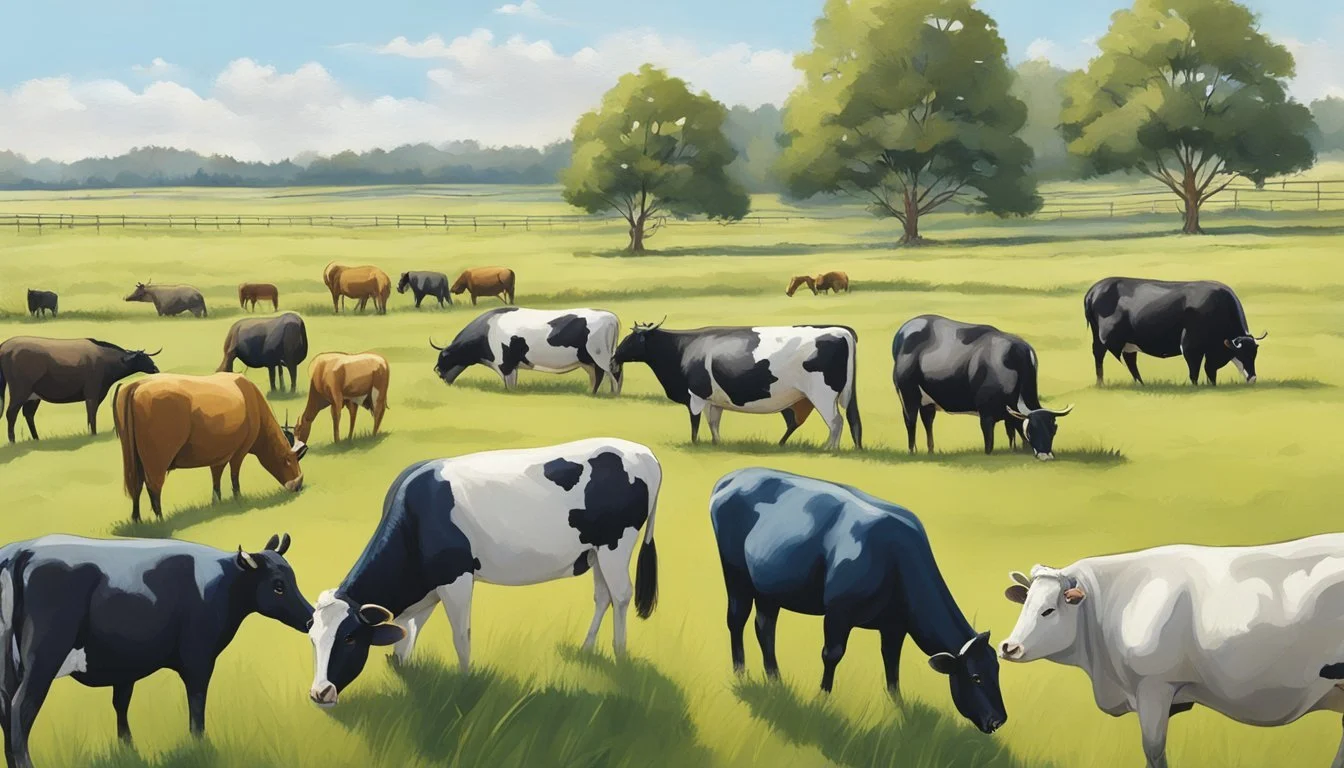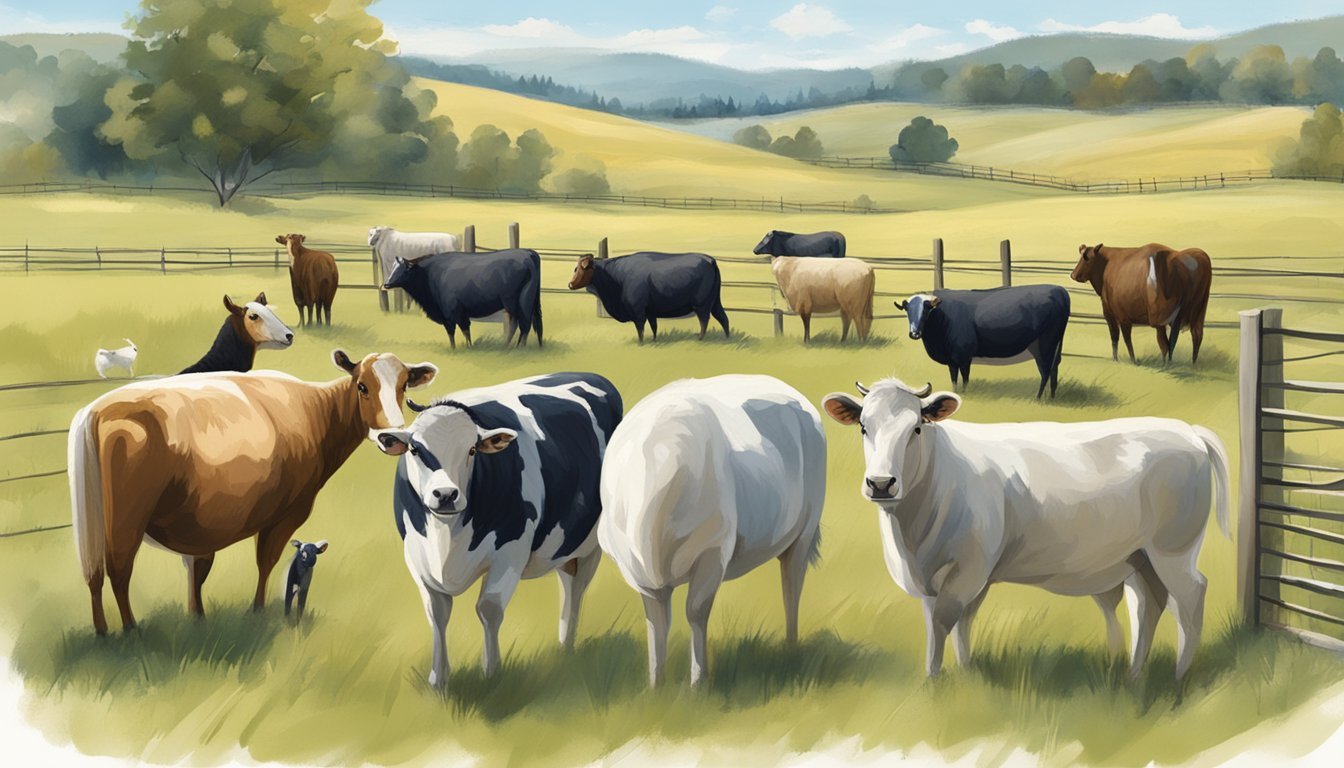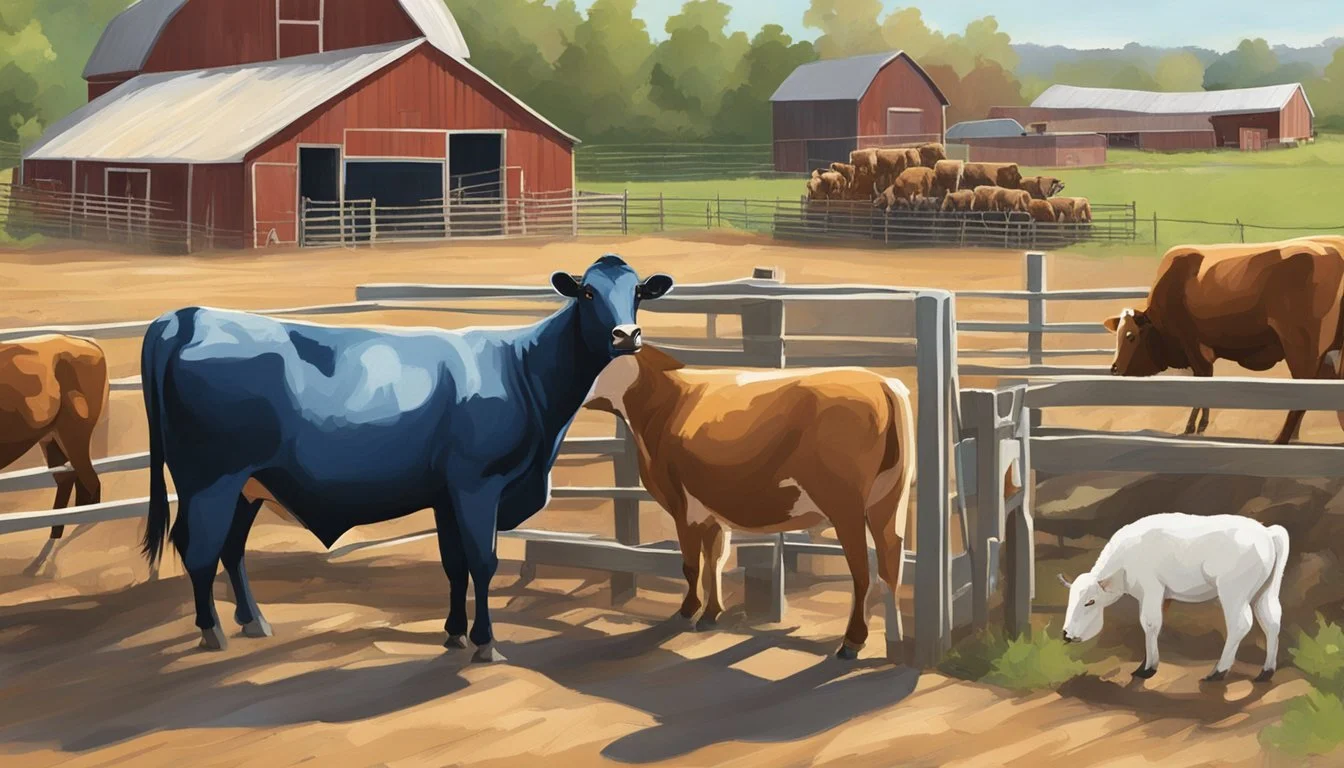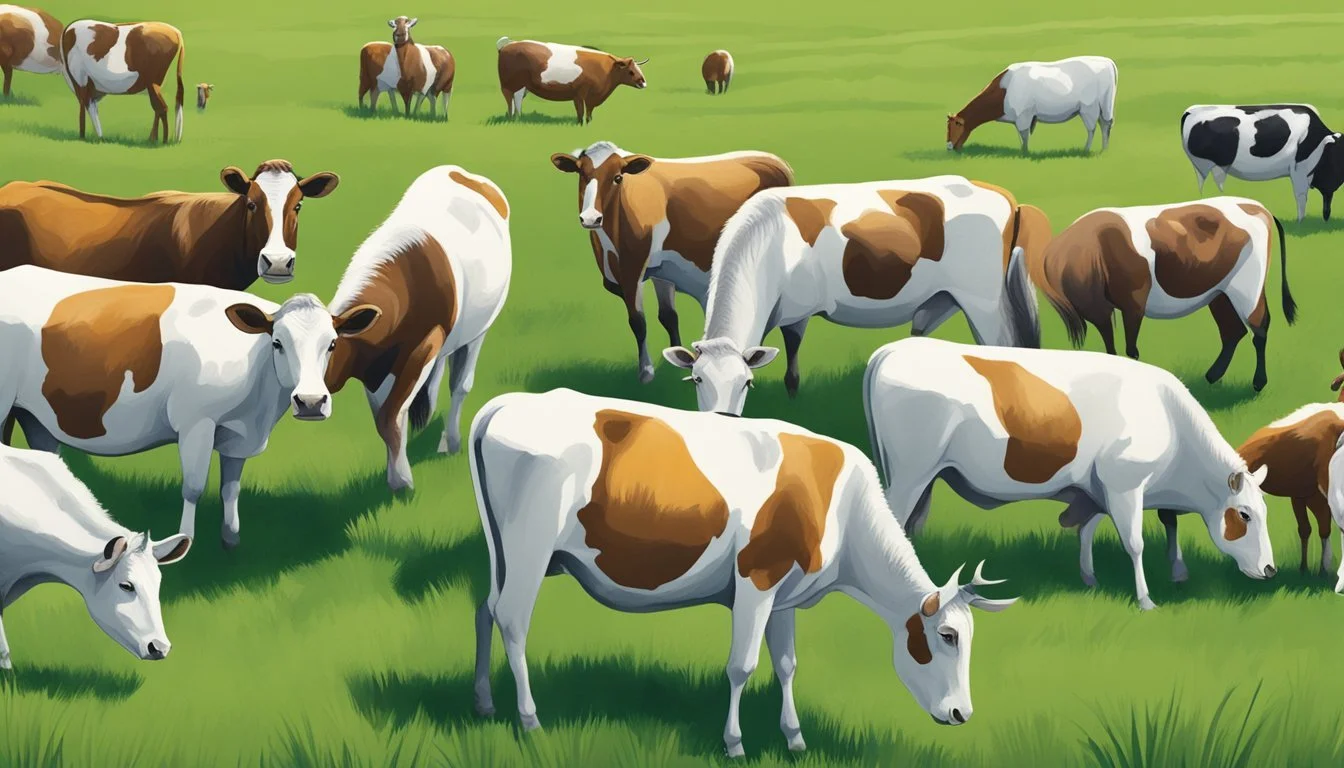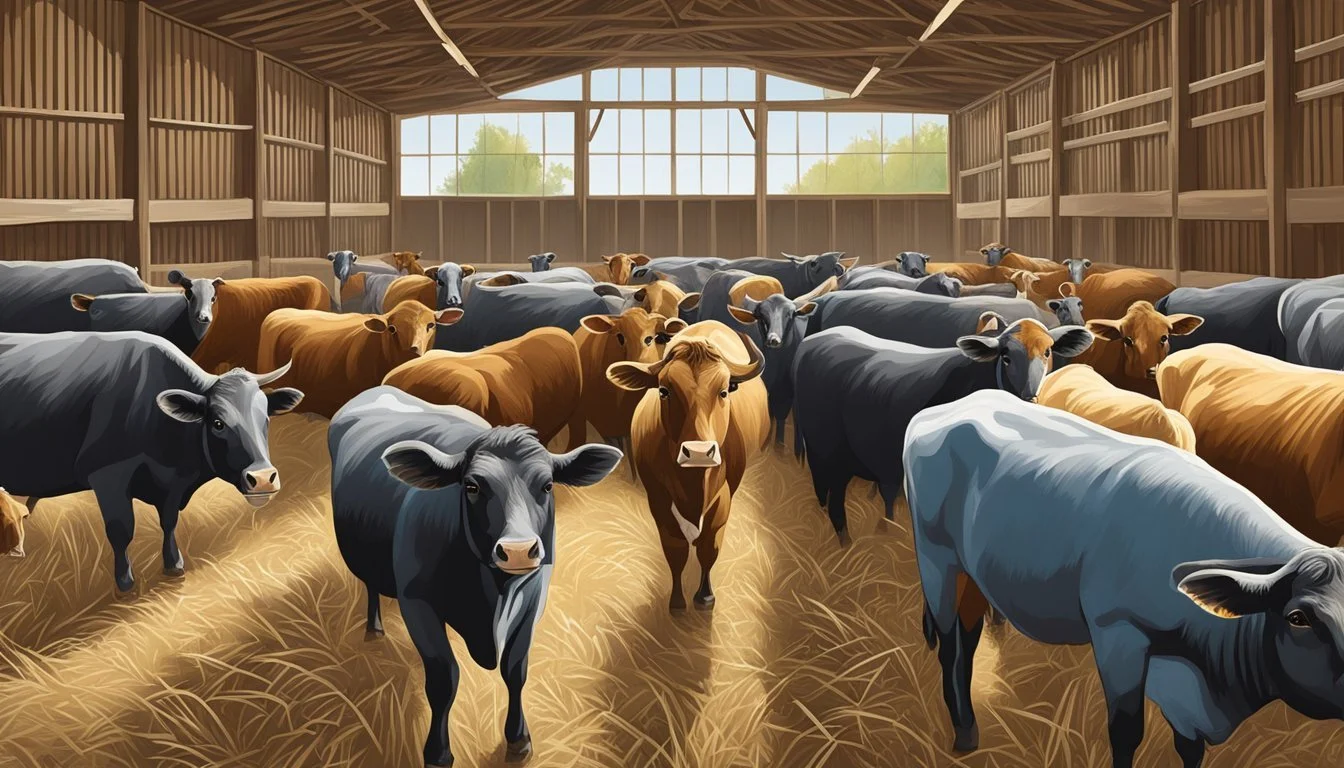Ultimate Guide to Using Livestock Marking Paint
Efficient Techniques for Temporary Animal ID on Homesteads
Livestock marking paint offers an efficient and temporary method for identifying animals on a homestead. Whether for cattle, sheep, goats, or pigs, it provides a way to brand animals without causing permanent changes to their appearance. Homesteaders use marking paint to track breeding cycles, healthcare procedures, and easily separate individual animals in a herd or flock. These identification marks can be applied with tools such as brushes, sprayers, or rollers, making the process adaptable to the varying sizes and temperaments of different livestock.
When choosing livestock marking paint, it's important to ensure that the product is safe for use on animals. The paint should be non-toxic and designed to be easily visible on the fur, suitable for usage in various weather conditions, and harmless to both skin and fur. Additionally, utility extends beyond larger livestock to smaller lab animals where it can be used for identification with minimal stress induced.
Ear tagging is another complementary identification strategy that can be used alongside marking paint for better management. Tags provide a permanent option that, when combined with the temporary nature of marking paints, creates a reliable and well-rounded identification system. This system is particularly useful in managing dairy herds, where individual health and milking cycles are critical. The ease of visibility and application make livestock marking paints an essential part of modern homesteading practices focused on animal identification and management.
Understanding Livestock Marking Paint
Livestock marking paint is essential in the management of livestock on a homestead, used to differentiate, track, and manage animals effectively. It comes in various forms and is designed to be safe for use on animals.
Types and Categories
Livestock marking paint is available in different formulas and application methods. Types generally fall into two broad categories:
Aerosol Sprays: These are convenient for quick marking and cover a sizable area swiftly.
Paintsticks or Markers: These are solid paint in stick form applied with pressure directly onto the livestock.
Both types are designed to be temporary, allowing for flexibility in marking for different purposes. Notable ingredients often include polyurethane or water-based carriers for the pigments, with the latter being more eco-friendly.
Health and Safety Standards
When selecting a livestock marker, ensuring it is non-toxic and safe for both the animal and the environment is crucial. The paint should comply with:
Non-toxicity: Safe if ingested or on skin, protecting the animal welfare.
Skin-friendly: Should not cause irritation or affect health.
Premium markers emphasize health and safety standards, often containing a bittering agent to deter animals from licking the paint.
Color Significance and Selection
Choosing the right color for a task is important for visibility and meaning. Common color choices include:
Fluorescent Green: Often used for general identification.
Fluorescent Pink: Can indicate medical treatment or health status.
Fluorescent Orange: Typically used for breeding purposes.
Fluorescent Yellow: May signify a different category or age group.
Each hue is designed to stand out against the animal's natural color, with fluorescent colors being particularly visible. Pink, blue, and green are versatile and amongst the most common. Selection should account for both the color contrast against the livestock's fur and the intended message the color conveys.
Preparation for Marking Livestock
When marking livestock, it's essential to consider both the animals' skin and fur condition and the type of paint for optimal, lasting identification. Proper prep ensures the markings are visible and that the animal's comfort is maintained.
Animal Skin and Fur Condition
Before application, one must ensure that the livestock's skin and fur are ready to receive the paint. For the marking to be successful, clean and dry fur is ideal. However, some advanced marking paints can adhere to wet surfaces. Livestock owners should check for any skin conditions that could be aggravated by the paint. With cattle and sheep, the presence of thick fur may require a more generous amount of paint, while short-haired breeds could require less.
Guidelines for Preparing Livestock Skin and Fur:
Cleaning: Remove dirt, mud, or debris from the fur.
Checking Fur Length: Adjust paint quantity based on fur thickness.
Skin Inspection: Ensure there are no cuts or irritations.
Selecting the Quantity and Quality of Paint
The quantity and quality of livestock marking paint are pivotal in achieving durable and long-lasting identification. For extensive herds, purchasing in bulk might be cost-effective, whereas, for small homesteads, a smaller quantity suffices. A high-quality paint ensures the mark remains visible for the required length of time without frequent reapplication. Farmers should look for paints specifically formulated to be non-toxic and safe for animals.
Tips for Selecting Paint:
Quality Over Cost: Durable and visible marks may require premium products.
Estimating Quantity: Predict usage based on herd size and marking frequency.
Safety First: Ensure the paint is suitable and safe for the intended livestock.
By thoughtfully preparing for livestock marking, farmers can establish an efficient system that serves both identification purposes and the well-being of their animals.
Techniques for Applying Livestock Marking Paint
The effectiveness of livestock marking for identification hinges on the application technique. Precision and method are crucial for ensuring visibility and durability, especially when considering environmental factors.
Spray Techniques
Spray paint for livestock marking is known for its fast and efficient application. Users should select an inverted tip designed for ease of use. The technique involves:
Shake the can well before use to ensure the paint is well mixed.
Hold the can 6 to 8 inches away from the animal's coat to apply a clear and defined mark.
Use a steady hand motion to create an even coating.
For optimal performance, it is advisable to apply the paint in dry conditions as moisture can affect the paint’s adherence to the animal's fur. All-weather spray paint options are available for situations where weather conditions are unpredictable.
Roller and Brush Application
A roller or a brush can be used for markings that require more precision or a thicker coat. This application method involves:
Dipping the roller or brush into the paint, ensuring it is well-coated but not dripping.
Applying with firm, even strokes, working the paint into the animal's coat for maximum visibility.
Allowing the mark to dry completely before the animal returns to its daily activities.
The roller and brush technique is particularly beneficial for small-scale marking needs or when a longer-lasting mark is necessary.
Environmental Considerations
Environmental factors significantly influence the choice of marking paint and application technique. Livestock owners must consider:
Weather conditions: Use weather-resistant paint in wet or unpredictable climatic conditions.
Temperature extremes: Some paints are formulated to perform well in high or low temperatures.
Safety: Select non-toxic paints to ensure the health of the livestock.
By accounting for these variables, farmers can maintain a reliable animal identification system that adapts to their specific environmental challenges.
Identification and Tracking
Effective livestock management hinges on reliable identification and tracking systems. Both ear tagging and paint marking serve this purpose, offering farm operators tools to monitor animal health, breeding, and logistical data.
Ear Tagging versus Paint Marking
Ear tagging involves attaching a small tag to the livestock's ear, imprinted with an identification number or SKU. It's a permanent method, often paired with other forms of identification like branding or tattooing for added security. Ear tags provide immediate visual identification and are commonly used for tracking cattle and other livestock over long periods.
In contrast, paint marking is a temporary solution designed for short-term monitoring and identification. Livestock marking paint can be applied with a brush, sprayer, or roller, rendering it highly visible against the animal's fur. While not as permanent as ear tags, paint marking is invaluable for quickly sorting animals during breeding or health interventions.
Advantages of Ear Tagging:
Long-term tracking
Durable and weather-resistant
Can be paired with RFID technology
Advantages of Paint Marking:
Ideal for temporary identification
Highly visible for immediate sorting
Easy and stress-free application
Integrating RFID with Paint Markers
The incorporation of Radio Frequency Identification (RFID) with traditional identification methods such as ear tags enhances the tracking capabilities of livestock management systems. RFID tags store detailed data about the animal, accessible via specialized readers.
Usage of RFID with Ear Tags:
Data Collection: Stores vital information about each animal.
Automation Potential: Facilitates automated feeding and health monitoring systems.
While paint markers alone do not carry RFID technology, they can be used alongside RFID tags for supplementary identification. For instance, during transport or short-term events like fairs and auctions, paint marking can indicate an animal's status or group, which, when scanned, links back to the RFID ear tag holding comprehensive data.
Managing Livestock with Marking Paint
Livestock marking paint provides a versatile tool for efficient farm management, particularly for temporary identification during breeding and sorting activities. Utilizing different colors can aid in quickly communicating an animal's status to those working on the homestead.
Breeding and Heat Detection
When managing breeding programs, it is critical to identify animals that are in heat. Tail painting is a common practice where marking paint is applied to the tailhead of female animals. A significant smudge or removal of the paint indicates that the animal has likely been mounted, suggesting standing heat. This visual cue helps the farmer know it may be the optimal time for artificial insemination or to allow for natural breeding.
Heat Detection Indicators:
Paint intact: potentially not in heat.
Paint disturbed: possible signs of heat.
Sorting and Culling
Sorting and culling livestock are routine management practices to maintain herd health and productivity. Marking paint can be applied in a variety of colors to indicate different groups or treatment needs, making the process of organizing animals more precise and less stressful. For example, a red mark could signify that an animal is due for medical treatment, while a blue mark might indicate a different grouping for marketing livestock purposes.
Sorting Codes:
Red: Treatment needed
Blue: For sale
Green: Cleared from treatment
By employing marking paint, farmers can streamline their management processes, communicating important information at a glance and ensuring the well-being and appropriate grouping of their livestock.
Operational Uses in Farm Management
In managing a homestead, precise record-keeping and clear identification methods are vital for maintaining the health and logistics of livestock. Marking paints facilitate efficient operations, especially during vaccination and transportation activities.
Vaccinating and Treatment Records
Livestock marking paint plays a crucial role in recording vaccinations and treatments. When an animal receives a vaccine or treatment, a temporary mark can indicate the date and type of administration. Here is how a farm manager might record this information:
Date Administered: Indicate with a specific color of paint.
Type of Vaccine/Treatment: Designate with paint marks in various shapes or positions.
Treatment Due: A different color or mark signifies the need for an upcoming treatment.
For example:
A blue mark could represent a vaccination, with the shape indicating the vaccine type.
An "X" might indicate treatment completed, while a circle can mean treatment is due.
This visual system allows anyone working on the homestead to quickly assess an animal's treatment history with a glance, ensuring no animal misses a crucial vaccine or treatment.
Shipping and Transportation
Marking paint also assists in organizing animals for shipping and transportation:
Identify Destination: Use color codes to mark animals according to their shipping destination.
Record Shipping Date: Marks can indicate when the animal is scheduled to be transported.
Verify Transportation Records: Check paint markings against transport records to ensure the right animals are moved.
By implementing a color-coded system, there is less chance of confusion, and the transportation process becomes more organized. This method supports a smooth logistical operation and acts as an additional layer of verification against written records.
Overall, the strategic use of livestock marking paint significantly streamlines farm management, particularly in areas requiring meticulous records and clear communication among farm staff regarding livestock status and movement.
Best Practices for Livestock Paint Maintenance
Ensuring the efficacy and longevity of livestock marking paint requires attention to proper storage and regular assessment for reapplication. Best practices in maintenance play a critical role in the usability and effectiveness of these identification tools.
Storage and Shelf Life
Storage: Livestock marking paint should be kept in a cool, dry place away from direct sunlight to prevent degradation. Moisture can compromise the quality of the paint, while excessive heat can cause the container to warp or the paint to separate.
Shelf Life: The shelf life of livestock marking paint is typically specified by the manufacturer, and it is essential to adhere to this timeframe to ensure optimal performance. Paints that have exceeded their shelf life may not adhere well to the animal’s fur or could cause irritation.
Regular Assessment for Reapplication
Assessment Frequency: Regular checks should be conducted to determine if the markings remain visible and intact, as environmental factors such as weather and the animal's activity level can affect the durability of the paint.
Reapplication Interval: If the paint has faded or been removed, reapplication is necessary to maintain proper identification. Markings should last up to four weeks; however, one must monitor the marked livestock closely, especially during adverse weather conditions, to determine if reapplication is needed sooner.
By closely following these maintenance guidelines, your livestock marking paint will serve its purpose effectively, providing reliable identification throughout its designated period of use.
Regulations and Legal Considerations
When managing livestock on a homestead, it is essential to adhere to country-specific marking laws and ensure compliance with recognized livestock marking standards for responsible identification practices.
Country-Specific Livestock Marking Laws
In the United States, livestock identification is regulated to ensure traceability and health monitoring. For instance, the Animal Identification Number (AIN) is a 15-digit code used for this purpose. Laws require that livestock such as cattle and sheep are identified in a way that adheres to federal and state regulations. The first three digits often signify the country, with "840" denoting the United States. It is crucial for homesteaders to check with their local state departments of agriculture for specific requirements, as these can vary between states and types of animals.
Compliance with Livestock Marking Standards
To comply with livestock marking standards, identification methods should be safe for the animals and effective in allowing for clear visibility and differentiation. There are established standards in the choice of marking tools. For instance, livestock marking paint must be non-toxic, should provide good visibility, and be durable enough to last while needed without causing damage to the animal’s skin or fur. When choosing a marking paint, it is recommended to ensure that the product is labeled for the specific species it will be used on and that the labeling indicates compliance with the relevant standards set forth by agricultural authorities or industry organizations.
One must also be aware that any form of livestock identification, including the use of paints, may also be subject to inspection and approval by relevant animal health officials in order to maintain legal and regulatory compliance. Homesteaders are advised to maintain records of all markings and identifications made to the livestock to ensure traceability and accountability.
Conclusion
On the modern homestead, farmers have come to rely on the efficiency and simplicity of livestock marking paint for the temporary identification of animals. This method, revered for its stress-free application, stands as a testament to ongoing innovation in animal husbandry practices.
Use of Livestock Marking Paint:
Provides a non-toxic, safe way to mark animals.
Ensures visible tracking of breeding, healthcare, and sorting.
Anticipating future trends, homesteaders may observe an uptick in the development of environmentally friendly and longer-lasting formulas. They should stay informed about new products enhancing identification accuracy without compromising animal welfare.
Tips for Homestead Farmers:
Select vibrant colors for clear visibility against various fur colors.
Apply effectively—even on wet surfaces.
Invest in equipment like inverted tip sprayers for precision.
Homesteaders have a responsibility to balance tradition with innovation, adopting new methods that enhance their efficiency and sustainability. The continued evolution of marking tools will likely provide a broader array of options, making temporary animal identification even more seamless. They should remain receptive to advances in this field, leveraging these tools to ensure the well-being of their livestock and the success of their operations.

